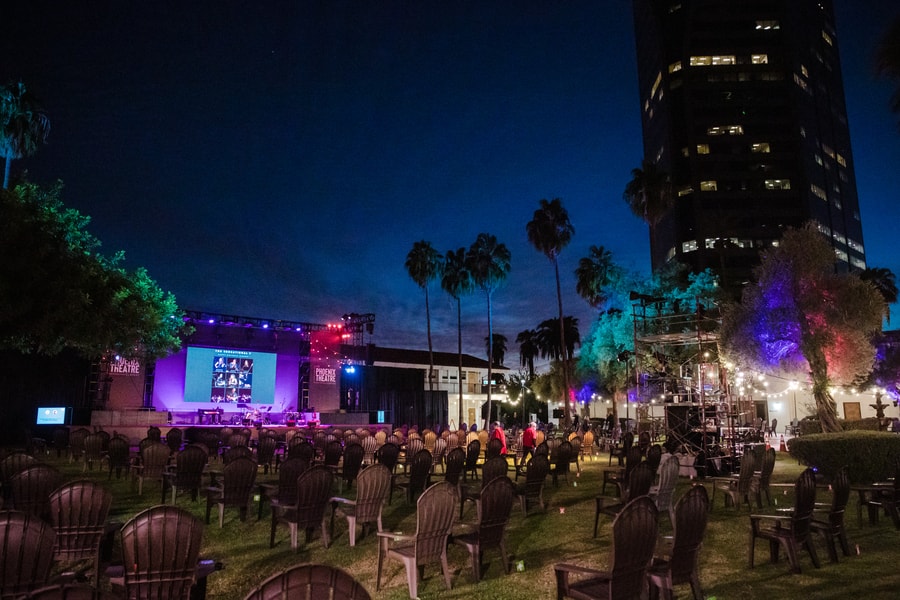Who says you can’t teach an old dog new tricks? With the pandemic necessitating adaptation, flexibility, and, yes, even branching outside of the normal way of producing, two theatres in the Southwest have pushed through the limitations of the pandemic to try something different. In Phoenix, the 101-year-old Phoenix Theatre Company (the sixth oldest regional theatre company in the country) has taken this opportunity to set aside digital productions and instead venture outside to produce for the first time in their history.
“We felt like our subscribers were not terribly interested in virtual experiences,” said producing artistic director Michael Barnard (he/him). “Even though we were doing a number of them during the course of the summer, nothing was really striking a chord at the same level as live.”
To try to return to that live interaction, Phoenix Theatre Company relied on an existing relationship they had with Central United Methodist Church, which is situated a block north of the theatre and has a courtyard that managing director Vincent VanVleet (he/him) thought would be a great location for an outdoor stage. After reaching out to the church, the theatre formed a partnership with the church, building a new outdoor stage in the courtyard that the church would also also be able to use for services. As the plan came together around seven weeks before the company was slated to open late last fall, the theatre pulled together partners to build the stage while starting to plan what programming they would be able to offer.
The new space accommodates 250 attendees, seated in pairs while allowing for six feet of distance between pairs in all directions. The custom-designed stage includes a large video screen and motorized speakers. Everything was designed both with safety specifications in mind, as well as in a way that would ensure the protection of the venue and equipment in the case of inclement weather.
“We’ve never built an outdoor venue or performed outside as a company,” said VanVleet, who said it took input from their entire organization to create and execute this plan well. “Our thought was, we’ve spent a decade building a team of artisans that work well together, and it would be all the harder to come back in September or October and have to rebuild a team of 50 full-time staff members. Our goal throughout all of this was not necessarily to make money or even break even. We were fully prepared to operate it at a loss to keep the team together and keep our folks employed to the best of our ability.”
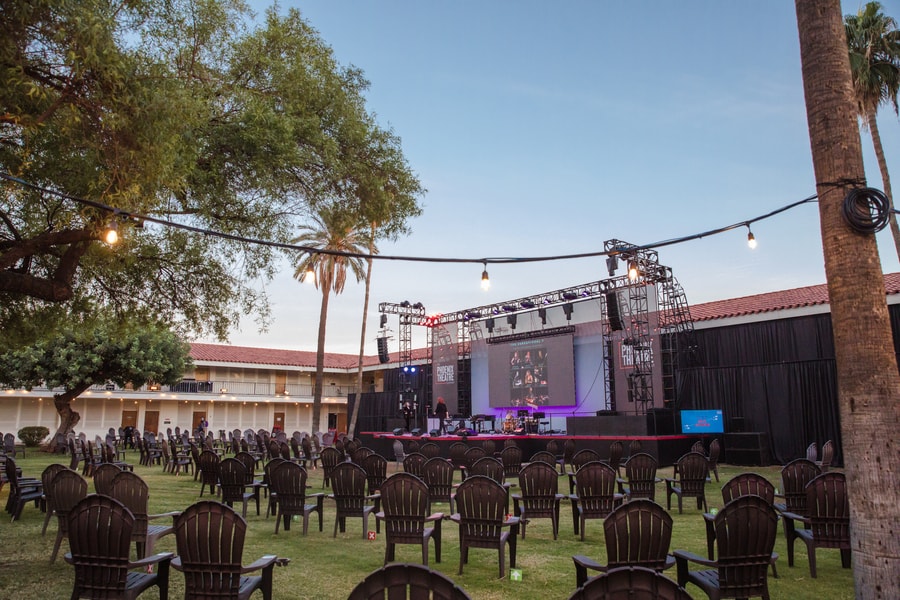
As a result of the pandemic, the theatre actually found itself in a better position financially to pull this effort off than they may have had they tried it during a non-pandemic year. With many of the concerts and events that would typically use the equipment needed for an outdoor venue like this sidelined by gathering restrictions, they were able to put their venue together at a reduced cost. They were also able to use the church’s spaces, including a vacant education building, to spread out and keep significant distance as part of their safety protocols—allowing actors, crew, and orchestra members to reduce the number of times they may cross paths.

Additionally, Barnard and VanVleet cited the local government-mandated safety protocols they needed to put in place to get a permit for the outdoor venue in the first place as a contributing factor to their safety protocols—surpassing, they say, what even Actors’ Equity was asking. The theatre conducts COVID testing three times per week in their lobby and has been working with actors who are already in a relationship and are able to cohabitate. This also means that if any of the four actors (two couples) who are cohabitating together for their current production of Ring of Fire get sick, the theatre would have to pull the entire cast, replacing them all with swings. The theatre also made arrangements to remove any intermissions and has added two QR codes to seats: one to access the production’s program and another to order food and drinks directly to your chair.
“It reduced the people needing to get up and move about the venue or go queue in a line somewhere,” said VanVleet, “which was a huge development for us, and something we’re even contemplating keeping once we go back indoors.”
These adjustments allowed the theatre company to accomplish two major goals: keeping staff together and remaining visible to their live audience. In November 2020, Phoenix Theatre Company opened their outdoor venue with a socially distanced concert, Happy Birthday Dionne, celebrating Dionne Warwick, while continuing to work with Equity to secure the rights to their first book musical. Their first Equity-approved production, Murder for Two, opened in February, and they were able to secure contracts for subsequent productions of Ring of Fire, which closes this Sunday, and My Way: A Musical Tribute to Frank Sinatra, which opens April 14. The latter production will close out the outdoor season before, as VanVleet said, it gets too hot in Arizona to continue producing outdoors. Of course, even with safety procedures in place, patience has been needed around expectation for turnout.
“Naturally, there’s a segment of the population that wanted to run out of their house to go do something,” said Barnard, “so they were the first to come. That word of mouth helped a great deal in building our population.”
VanVleet agreed, stating that it took three safe productions for the word of mouth to build, with patrons telling each other that, yes, they did indeed feel safe at these productions. Now that vote of confidence, combined with the theatre’s marketing efforts, has the theatre selling out its Ring of Fire run. Still, even as the company looks toward the future and the burgeoning vaccine rollout, they are once again looking at reducing production size back down to a one-person show, performed to a 50-percent capacity audience indoors. Though they are hopeful that vaccines will result in the relaxation of some restrictions, they will still be tracking audience response, and have pushed plans for a full-chorus musical back to the beginning of 2022. As with their venture into outdoor theatre, they hope this gradual onramp will give their audience the time to reacclimate, build trust, and work toward returning to full capacity over multiple shows.
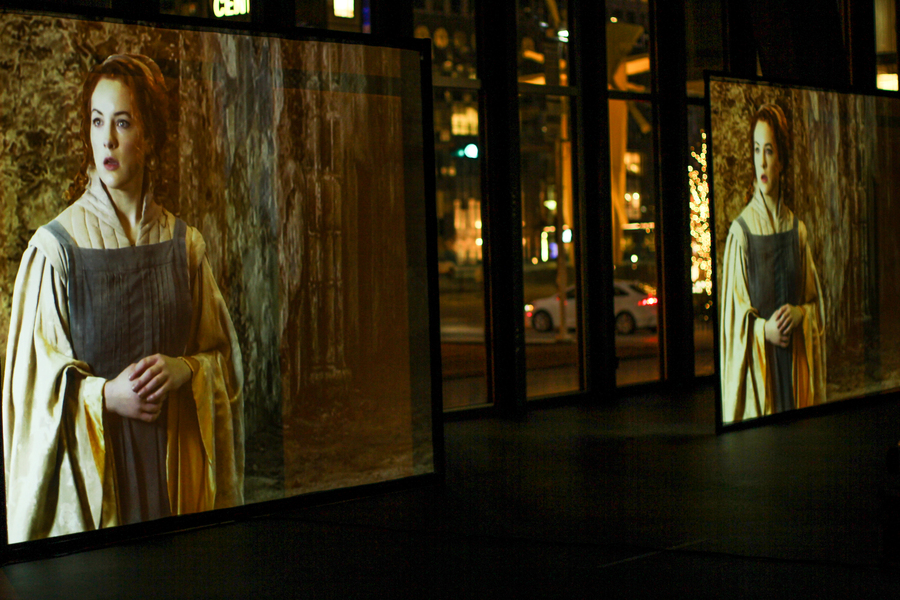
Meanwhile, in Dallas, Dallas Theater Center (DTC) has found a surprising amount of hope, despite what could be seen as a recent setback. As The New York Times reported last week, DTC was at the center of an uproar that saw over 2,500 people sign a petition expressing frustrations with Equity’s reopening plans, guidelines, and purportedly inscrutable decision-making. This came after the plug was unceremoniously pulled on DTC’s production of Tiny Beautiful Things mere days before rehearsals were to begin; the theatre and Equity had reached an impasse on safety protocols, despite a 45-page safety plan from the theatre.
Though DTC confirmed to me that they are planning to move the production back to the fall, losing that production in this half of the calendar year was a tough blow. After all, having to credit subscribers now means moving money that had been allocated to this current fiscal year to the next, reducing and straining the theatre’s revenue during an already difficult period for theatres. All of this comes on top of being a theatre located in a state where the governor both lifted the state’s mask mandate and allowed businesses and facilities to open to 100 percent capacity.
“It isn’t easy, and frankly it’s incredibly frustrating,” said managing director Jeffrey Woodward (he/him) in an interview. “At the state level, we have a very open policy regarding masks and social distancing. The local Major League Baseball team announced that they will be at full capacity beginning in April. In our part of the state, though, because our county executive is still following what is going on at the national level, which is following CDC guidelines, we continue to operate that way. We’ve implemented a pretty stringent safety protocol plan, which includes everything from double masking to temperature checks to registering whenever you come into the building.”
According to DTC company manager and COVID compliance manager Gabriela Leodiou (she/her), they are working with two local consulting medical experts as well as checking CDC guidelines and Dallas County Health and Human Services guidelines to determine their safety protocols, meeting regularly to make sure protocols are up to date. When the lifting of the mask mandate came down from Gov. Greg Abbott, Leodiou said they knew they were going to stick to the science. But Woodward said he doesn’t believe that the tension between the state’s relaxed handling of COVID and Equity’s more stringent safety measures played a part in the decision around Tiny Beautiful Things.
“I’m not sure that most of our board understood that at most theatres in America, there are few or no actors who are paid a salary. It’s a noticeable difference and it was stark. Our acting company, the face of the theatre, they’re not in this room.”
“Our audience is with us,” Woodward said. “We have not received any pushback that we’ve seen in other various places around the country where people have used masks as a political tool.”
Additionally, Woodward says, the theatre was able to receive two Paycheck Protection Program (PPP) loans and will be applying for a Shuttered Venue Operators Grant. They have also seen “tremendous support” from foundations, corporations, individuals, and indeed their subscribers throughout, which has bolstered the company financially. As a result, they’ve been able to keep their full-time staff on payroll, even as theatres around the country have had to lay off or furlough employees. It was a decision early on from DTC’s board and senior leadership to do everything they could to keep staff employed, including those whose work typically involves DTC’s physical space or patron interaction. It’s a choice that artistic director Kevin Moriarty (he/him) said meant making “brutal” cuts.
Even after this decision, as DTC leadership and board members looked around at the staff they were able to keep, they realized that there weren’t any actors represented at their table. After all, even their resident acting company operated as independent artists working through their union for individual productions.
“I’m not sure that most of our board understood that at most theatres in America, there are few or no actors who are paid a salary,” said Moriarty. “It’s a noticeable difference and it was stark. Our acting company, the face of the theatre, they’re not in this room. So our board stepped forward when they realized this, and we put them all on contract for the year. We added them to our staff, we added them to our health insurance. That has changed us.”
A big focus for the company as it looks toward the light at the end of the pandemic tunnel is to keep and expand on this idea, hoping to increase a company of eight or nine to at least 14, and to add designers, directors, and a playwright in residence to their full-time staff. The goal is to make sure DTC is putting artists at the core of the work and expanding the decision-making process beyond the limited perspective, as Moriarty put it, of a singular artistic director—a task that’s made more difficult when only working with jobbed-in freelancers. This realization is not one Moriarty believes would have happened without the strife and self-examination caused by the pandemic.
“All of us in the field, and certainly here at Dallas Theater Center, are just desperately trying to do anything we possibly can to keep our artists and our staff employed and to share work with our community,” said Moriarty. “Given the extreme limitations that we have right now, we’re kind of boxed into a corner. One of the few things that seems possible is, well, we can do some stuff outside.”
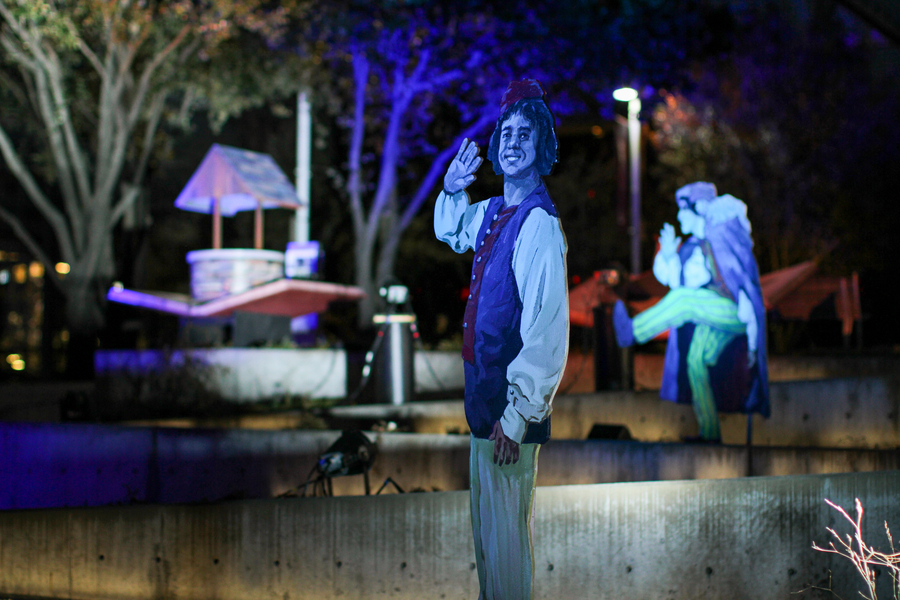
Moriarty noted that the theatre has taken this opportunity to experiment with site-specific, interactive work that he said are almost like art installations. One such production, Something Grim(m), which runs through this Sunday, allows audiences to take a self-guided tour through various locations around the company’s Dee and Charles Wyly Theatre that feature different audio and recorded video elements. It’s a type of production the company had begun to explore before the pandemic, allowing audiences to influence the production they’re seeing in some way, or having them become part of the production by physically moving through it rather than sitting passively.
Still, as he looks at this production and the work begin done in the field digitally and on Zoom, Moriarty said he’s most excited to get back to a place where actors can fully interact with audiences again, not merely in recorded form, as has been required for Grim(m).
“It’s probably the least visionary position I have ever found myself in in my time as an artistic director,” said Moriarty, “because we’re not starting from a compelling story to tell or from an urgent theme that needs to be explored or from an artist’s vision that we want to support. Instead, we’re starting from a series of very practical, extreme limitations and then saying, ‘What can you do in those limitations?’”
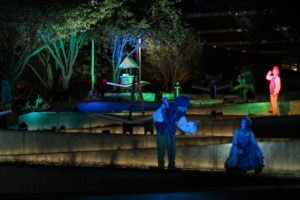
Moriarty is already contemplating what a remount of Grim(m) could look like, with many elements staying the same but mixing in live actors at key moments. Until that can happen, the company is working toward a more conventional staging later this year, Working: a Musical, while hoping that the vaccine rollout will change the conversation around what productions get the go-ahead. From conversations Woodward has had, he expects safety protocols and expectations to start to shift with the rapid expansion of the vaccinated population. While Woodward sees this development as a significant catalyst for change, he acknowledged that it’s hard to say when exactly we’ll reach that tipping point.
The hope is that the shift will happen before the theatre’s intended return to indoor productions in the fall, though the theatre is moving forward with uncertainty around what the safety protocols will even be by the time fall arrives. Woodward is confident that, by that point, the number of people vaccinated will be significant enough to see case numbers dramatically fall. One of the more frustrating sticking points for many who’ve worked with Equity throughout the pandemic has been the union’s reliance on local COVID case numbers and infection rates to determine whether or not to approve of a production—an aspect, many have noted, that is beyond the control of a theatre.
At DTC, local medical advisors who have been reviewing their safety protocols feel confident that the theatre will be able to produce outdoors this summer, with fall being a reasonable expectation for a return inside.
“There will be some people that will be a little hot,” joked Woodward about outdoor productions during a Texas summer, “but we just want to get back to work. Our actors want to get back to work. And I know that our audiences are anxious to get out of the house and off Netflix to share in cultural activities with other people.”
The theatre also intends to have start times at 8 p.m. or later to account for that heat, though Woodward also pointed out that Texans are pretty used to the heat, with baseball, concerts, and other cultural activities taking place outside during normal summers. But much like Phoenix, he is expecting patrons to return slowly. It’s difficult, after a theatre has been dark for a long period of time, to rebuild that auidence base, and he noted that it’s going to be a lot of work to remind audiences of what DTC has to offer.
As Moriarty has spoken with those outside the field, he’s gotten the feeling that there are aspects of a pre-pandemic way of doing things that people aren’t excited to get back to, whether it’s anxiety around returning to a physical office space or just missing the opportunity to turn in-person meetings into Zoom meetings. But when it comes to theatre, the champing at the bit to return to in-person, live theatre extends well beyond those creating the art. While there may still be some audience hesitancy this fall, he said, patrons are just as eager as the artists to get back to the art they’ve been missing.
“I honestly believe by January that there will be a return to pre-pandemic levels,” Moriarty said. “I believe that we are in for an explosion once the dam breaks. It might not be August or September when it breaks, but when the dam breaks, there will be this explosion of pent-up desire for people to get out of their homes and engage with other human beings in shared spaces for shared stories and shared experiences. And I think that’s going to be great for theatre.”
Jerald Raymond Pierce (he/him) is associate editor of American Theatre. jpierce@tcg.org

